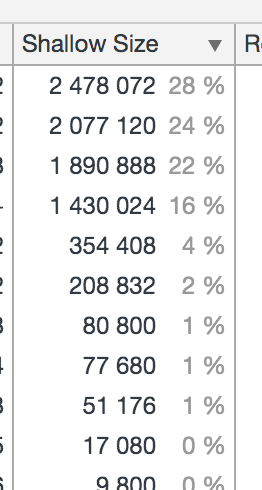

Now, the to space becomes full again and GC needs to be triggered. However, it also found that there’s a group that’s still reachable (has survived the GC cycle) and should be moved to the from space.Īfter the GC cycle, the to space has more available memory to be allocated and the objects that have survived in the first cycle were moved to the from space. The GC completed its cycle under new space ( to space) and found two blocks to be free (blank cycles). Let’s assume that a portion of the above graph loses its reference, meaning it can be freed: The GC (garbage collection) is triggered and performs a quick scan into the to space to check whether there are dead objects (free objects). However, as mentioned above, the new space is small, so what happens when the space is full? The black circles are freshly allocated objects. For this reason, it’s a good idea to clear the objects as soon as possible to free up memory for new objects and avoid them being allocated in the old space. While the allocation in the new space is very cheap, the new space is also fairly small in size (between 1 and 8MB). From space: the object that survived a Garbage Collection cycle.Note: The heap is divided into several spaces, but in this article, we’ll focus on just two of them. It’s small and designed to be cleaned frequently. New space: most objects are allocated here.The old space can be controlled by the flag -max-old-space-size Usually, objects are moved here after surviving in a new space for some time. Old space: where older objects are stored.The Memory Heap is divided into two major spaces:

V8 increases the heap size if it’s still full.V8 garbage collection cleans up the heap.When an application starts, it triggers the following workflow: How does Node.js allocate memory?īefore any memory analysis, it’s important to understand how Node.js manages memory allocation. This article explains how to measure memory allocation in Node.js applications and why it’s so important. Collecting and observing metrics surrounding memory usage in production applications is a key challenge. Memory is the root cause of the majority of bottlenecks in production applications. Which function allocates the most memory in the heap?.How much memory does this function allocate?.Some of the most commonly asked questions include: Gaining this understanding can result in substantial cost savings. The Importance of Measuring Memory Allocation in Node.js ApplicationsĪs Node.js developers evolve, it becomes increasingly important to understand how the runtime works internally to avoid problems in production, as well as to optimise the application so that it only uses the necessary resources.


 0 kommentar(er)
0 kommentar(er)
